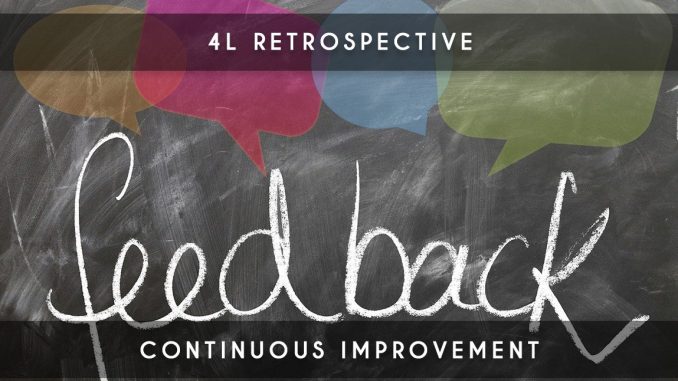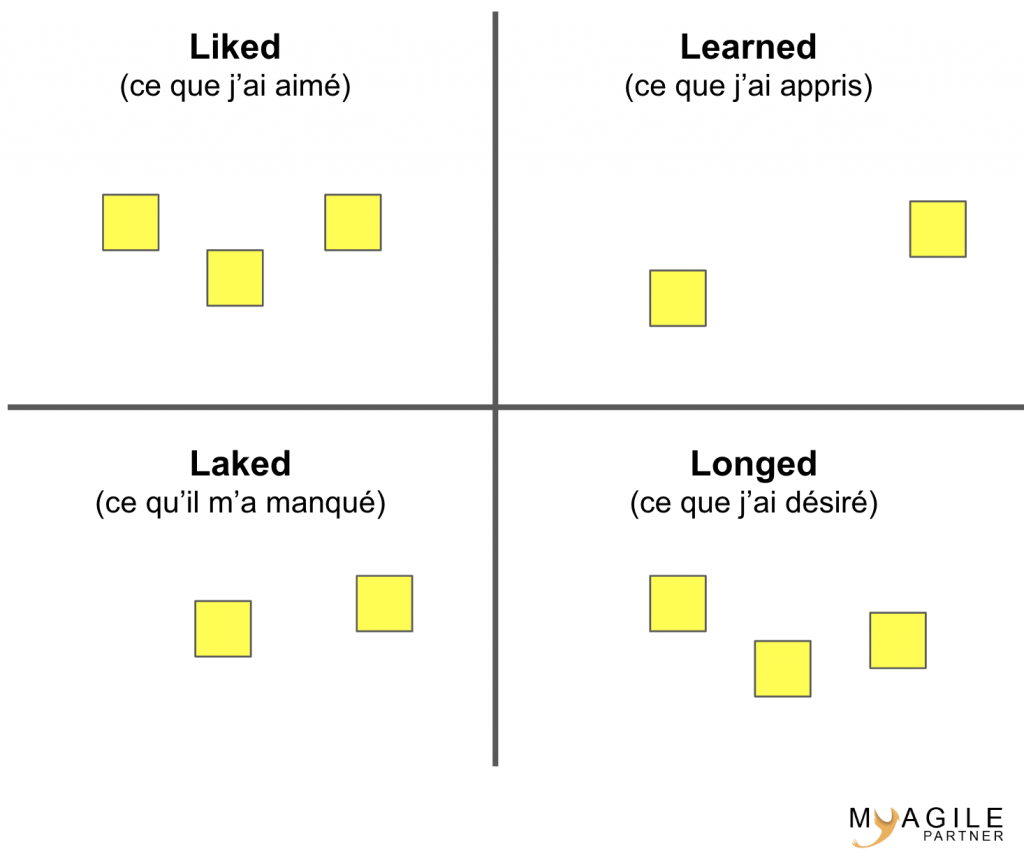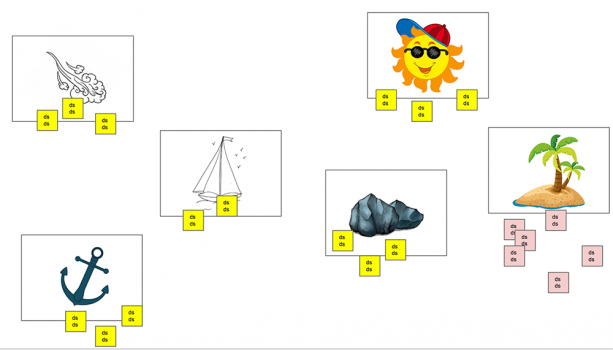
Today, I invite you to explore a widely popular classic retrospective used in many companies: the 4L retrospective. This retrospective is a timeless classic that deserves recognition.
Feel free to explore other retrospective techniques on our dedicated page:
Our retrospectives: [Retrospectives Page](https://www.myagilepartner.com/blog/index.php/retrospectives-blog/)
Essential Materials for the 4L Retrospective
For this retrospective, you don’t require an extensive set of materials. You’ll need:
- A whiteboard or flipchart
- Sticky notes
- Pens
The overall time allocation for this retrospective is 40 minutes.
Steps to Follow
The process of this retrospective is straightforward. The facilitator presents the board below to the participants, featuring four distinct themes:
- Liked: What I liked
- Learned: What I learned
- Lacked: What I missed
- Longed for: What I desired

Step 1 of the 4L Retrospective
The facilitator asks participants to share their thoughts related to the four themes mentioned above. Participants write down their ideas on post-it notes (one idea per note) and place them in the respective boxes on the board. Each participant doesn’t need to contribute to every box, but can suggest multiple ideas for the same box.
Duration: 5 minutes
Step 2 of the 4L Retrospective
Participants take turns to read aloud what they’ve written on their post-it notes and place them on the board. Simultaneously, the scrum master groups post-it notes with similar ideas to enhance clarity and readability of the ideas raised by the team.
Duration: 10 minutes
Step 3 of the 4L Retrospective
The facilitator allocates 5 minutes for participants to jot down improvement ideas on post-it notes. Each participant can suggest only one idea per note. Subsequently, participants share and explain their ideas, placing them on a board dedicated to improvement axes.
Duration: 10 minutes
Step 4 of the 4L Retrospective
Participants conduct a Dot Voting to select the top 3 improvement axes the team will focus on during the next sprint. The scrum master ensures a volunteer is chosen to oversee the implementation of these improvement axes. Empowering individuals to ensure these axes are not forgotten post-retrospective is vital.
Duration: 10 minutes
Conclusion: The 4L Retrospective
The 4L retrospective, a revered classic, might become a valuable addition to your retrospective toolkit. If your team is new to agility and prefers a less gamified approach, this format could be an excellent choice.
For more information, visit: [Retrospective in French](https://blog.myagilepartner.fr/index.php/retrospective/)




Be the first to comment